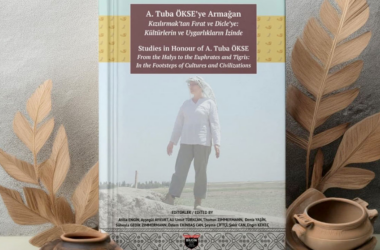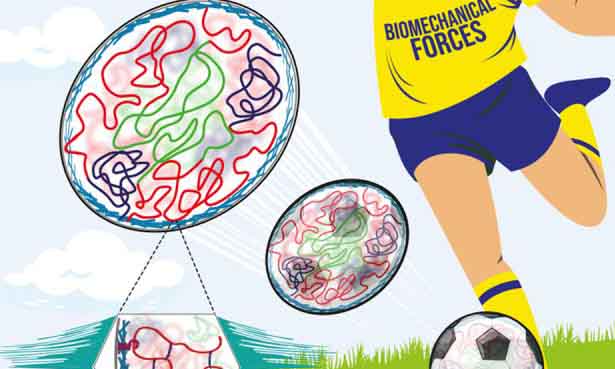Bilkent University National Nanotechnology Research Center’s (UNAM) Asst Prof. Aykut Erbaş has uncovered a critical mechanism explaining how the cell nucleus resists external mechanical forces.
In their paper entitled “Peripheral Heterochromatin Tethering is Required for Chromatin-Based Nuclear Mechanical Response,” the researchers demonstrate that the primary factor responsible for the nucleus’s rigidity is heterochromatin—the densely packed regions of DNA where genes are typically inactive.
This discovery is of critical importance for understanding how cells sense mechanical signals and how external forces affect DNA organization within the nucleus. Since nuclear structure and mechanical properties can change in conditions such as cancer, aging and certain genetic disorders, these findings provide a strong foundation for advancing both our understanding of biomechanical aspects of disease and the development of novel therapeutic approaches.
The work by Asst. Prof. Erbaş and his team sheds light on the link between nuclear mechanics and gene regulation, representing a significant step forward at the intersection of biology and materials science.
Using polymer physics-based computer simulations combined with experimental data, Asst. Prof. Erbaş and his team revealed that the physical tethering of heterochromatin to the nuclear envelope enables external forces to be transmitted directly to the chromatin, thereby enhancing nuclear stiffness. As these connections strengthen, the mechanical resistance of the nucleus increases. The study also found that proteins such as HP1α contribute to this process, while the more fluid-like properties of heterochromatin—such as those associated with liquid–liquid phase separation—do not play a significant role in nuclear rigidity.
The study was published in “Nucleic Acids Research,” one of the field’s most prestigious journals, by Oxford University Press. Read Asst. Prof. Aykut Erbaş’s full article here: https://academic.oup.com/nar/article/53/15/gkaf763/8237240













